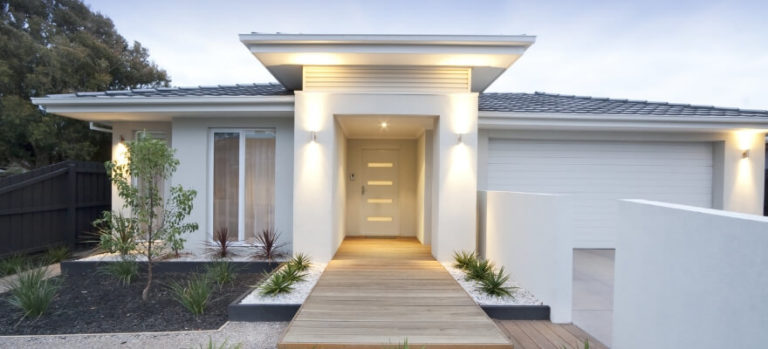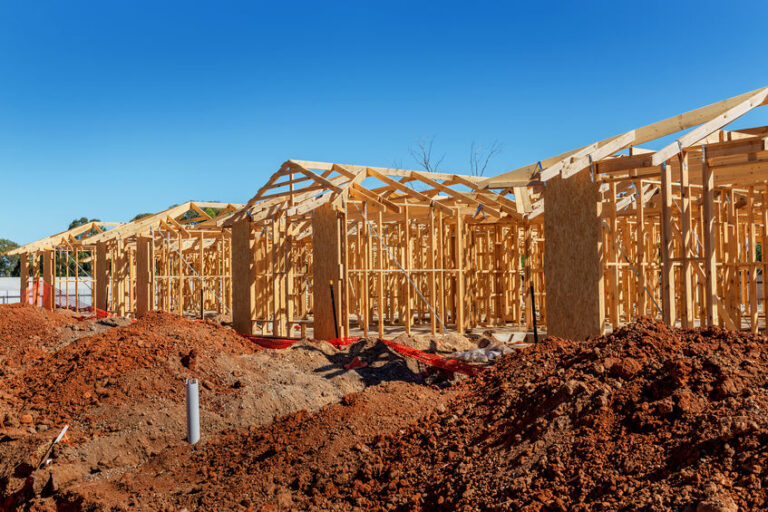Read the full interview here:
– G’day, everybody. James from mrkts.com.au here, and today, we are very privileged to be with Mr. Brent Hailey, the Managing Director of Orchard Property Group. Brent, how are you?
– I’m very well, thanks, James.
– Lovely to see you.
– Pleasure to be here.
– On a nice afternoon, here on the coast. So today, we’re just going to start with the basics. A little bit about yourself. If you could give me your CV in under one minute.
– James, I graduated as a civil engineer from QIT, as it was in those days, QUT now. I went on to get a postgraduate diploma in civil and municipal engineering. I then started my first job, which was as a civil engineer working in land development. From there, I started my own company, a consulting engineering firm, and that got merged into the BMD Group. I then became the director of not only the engineering department but the development department of BMD as we started doing our own land development. In 2000, I became CEO of BMD. In 2003, I moved on to Villa World as CEO. I had a year at Divine Limited, as the Chief Operating Officer, and then went back into doing what I love, which was development management, and that grew into Orchard Property Group. So today, nearly five years on, Managing Director of Orchard Property Group and doing our own thing.
– Extremely decorated career. We’re very lucky to have Brent with us today. So Brent, I suppose you touched on it, the evolution of your starting in the engineering part of your life and then moving into land development. But why land development, specifically?
– I kind of fell into it. When I was growing up, I always wanted to build things. And I got this sort of feeling that engineering was the career to pursue, but it was probably more tilted towards construction. But then when I graduated, it was at a time in the marketplace where there were very few jobs on offer, and I got offered a job with John Holland Constructions, which was in regional Queensland or to stay in Brisbane and work for a land development consulting engineer. My girlfriend persuaded me that it’d be better to have me close by.
– Yep, as always.
– That was the decision maker, I can absolutely assure you. So yeah, I started in land development and loved it from the day I walked in the door, and yeah, haven’t moved out of the field.
– For some people and some of the mrkts members, the definitions that they hear from day to day or the materials that they’re reading, and the volume of different materials on Google, can be a little bit overbearing, if you will. So I thought we’d just go over a couple of the really basic definitions on some of these terms and see if you can give us a little, brief summary of them.
– Sure.
– So, green fields.
– Okay, well the green fields is really the outer urban conurbations. So that’s the land that hasn’t been yet developed on the outskirts of the main cities or regional towns. That’s where the majority of families would migrate to. You know, the traditional house with the backyard sort of thing.
– The Australian dream.
– The great Australian dream.
– The great Australian dream. Brown fields?
– Brown fields comes back into the middle ring or inner urban, where there’s been say, old industrial projects or industrial developments. They might be now defunct or it might be that a major industry that has been established in an inner urban area. The company wants to upgrade to new machinery and decides that they need to move out into a new industrial area with better access to transportation. They sell up their site. So what you’ve got is these old sites but in inner urban areas. So you just do a redevelopment on those sites. The brown referring to the fact that you have to clean them up. Green, referring to the fact that you’re out on the outskirts of town in lovely fields.
– Okay, wonderful. And built form.
– Built form probably covers the whole thing, from townhouses through to multi-story development, big high-rises.
– I found in property that the answer is normally in the name.
– Yes.
– There aren’t many tricks.
– No, that’s right, that’s right. I think yeah, I shouldn’t say it, but most developers are simple people.
– Yes, we are, I’ll agree. When buying land, my understanding is there are a certain set of rules that you have to follow. Are they called covenants? Are covenants a set of rules that are handed down by the developer?
– Well, there’s two forms of rules, if you like, in regard to buying land. One is those that are imposed at the planning approval stage. So generally, you have to develop a plan of development and that will say certain things within a development approval’s things that have to be complied with. And that might be, things around setbacks to garages, or side boundaries. It may relate to fencing to open space areas or pathways. So there’ll be a set of rules around that. Then, yes, you have covenants, and they’re generally developer generated. In Queensland, they’re not enforceable, but they can form part of the contract. So, you generally then start talking about the aesthetic outcomes, making sure that people don’t put a galvanised tin house in the middle of your beautiful brick and tall development.
– You keep the standard.
– You try and maintain a standard that ensures that all buyers within the estate have the investment protected.
– Okay. Now… Builder or contractor or sub contractor.
– Yes.
– Are they the same thing or do they mean something else? Could you give us just a very quick rundown on what they mean.
– Well, builder and contractor mean two different things to me.
– Okay.
– A builder is building built form, a contractor is doing the civil works associated with land development.
– Okay.
– They both use sub contractors. So a builder will use the sub contractors, the plumber, the electrician, the roof tiler, the carpenter. A civil contractor will use a drainage contractor, an electrical contractor, a landscaping contractor, curb and channel, asphalt, those sorts of things.
– Yeah, understood. In the hope of understanding what it is you do, I think it’s good to also understand the pros and cons of certain elements of development.
– Sure.
– So we thought we’d run through a couple of the benefits and drawbacks to certain parts of the development industry. I thought we’d start with land. What would be, in your head, just a brief benefit and what the drawbacks are to purchasing land for someone at home?
– I suppose it, with everything, it comes down to your particular lifestyle choices at a point in time. So, certainly the benefits of land, you have a lot more freedoms. You get to choose your home. You get to choose in fact your block of land, where you want to sit within that particular development. You get to choose how you improve your land, whether you put a swimming pool in the backyard or build a beautiful barbecue or whatever else it might be. The drawbacks are yes, you have to mow the lawn every couple of weeks or at least pay somebody to mow the lawn every couple of weeks, upkeep the garden, and there’s continuous maintenance after a period of time, depending on the sort of finishes that you’ve put into your home.
– So the land you would say would be the blank canvas. So you have the flexibility to do what it is you want to do?
– Yes.
– But you don’t have the value of having a painting finished.
– Yeah, that’s exactly right. You’ve got to go through the process. Land just goes hand in glove with house and land. So then you might want to secure your block of land, but then you’ve got the process, if you like, of having to then choose your home and go through that whole building process.
– So then a townhouse or a duplex. Are they one in the same, part one? Part two, what are the benefits and drawbacks to the townhouse?
– Now a duplex is what it says.
– Two, duplex.
– Two.
– So that’s usually controlled under your planning instrument. Again, your plan of development, where you’ll designate certain lots, and councils generally tend to restrict the number of lots within a project that can be a duplex. They’ll also make sure they’re larger sites. They’ll generally be corner sites, because they don’t want them sitting side by side. Well, they’ll be sitting side by side, but they don’t want to present the same two frontage facades to the one street. So by being a corner lot, you can make one set of garages face one street, one set of garages face the other. So it does look like two dwellings
– Yeah.
– Those duplexes are on… Still a community title, so you’re jointly responsible for common property. Townhouses is just the extension of that, but in a multiple sense. So you know once, you get beyond two duplexes, you then fall into the multi-unit category, which then bigger-body corporates, different fee structures depending on whether you put an entertainment pavilion or you put swimming pool or whatever, different upkeep structures and upkeep cost.
– So a larger community, essentially as well.
– Yes.
– Okay.
– Emphasis with us too is that they are still a community title scheme. There is a body corporate involved.
– Okay, excellent. This question we find really interesting. Our members are really intrigued as to what the process is for someone like yourself. So as a land developer, from start to finish, of course, you can’t give us all of it ’cause it’s not that easy to do, but what is the, or could you explain the land development process from start to finish for me?
– Sure. From a company perspective, it’s built around our research. It’s built around where we see the developing trends, where people want to live. We’re primarily land developers. So we look in those growth corridors. We also look for what we call infill opportunities. Once we start targeting some areas, then the acquisition cycle kicks in. We start looking at planning schemes, trying to identify parcels that fit the planning intent of what we’re trying to achieve, residential land subdivision.
– Yeah.
– We’ll then either make direct approaches or we’ll look for what’s called on market opportunity. So on market opportunities are those that are advertised. Off market opportunities are those ones you go and seek yourself.
– Yeah.
– So having identified those, we then do a detailed feasibility, which again involves a lot of research as to what you can sell it for, a lot of detailed number crunching, by consultants on landscape costs, road building costs, preparation of the land, if you like, for sale. Then you go through the, if you’re successful in securing the parcel, you then get through a development approval process, which is probably the hardest and most arduous part of the whole process, and the part that is probably riskiest to the final outcome.
– But can get the highest uplift if done correctly?
– Correct, absolutely. If managed properly, it can really value-add. You can really value-add through that process. So once you get your development approval in place, the rest of it is not so much… You’re on the top of the slide and you’re on your way down now, but it’s not too bad.
– Yeah.
– The construction component is probably the quickest and the easiest. Then obviously, the marketing and style. You haven’t made a dollar of profit until you’ve actually sold the stock that you’ve produced. So that’s probably the most nervous part of the whole process, is just getting to the point where you’re comfortable that you have produced something that people want and will buy for the price that you want to sell it.
– Correct. So as a land developer, when does the tale end for you on that certain development? When are you out of the project per se, or is there an involvement? Like for example, if you were to build a built form unit building.
– Yes.
– And there’s a six and a half year warranty, for lack of a better term, what are you required to…
– From a developer’s perspective, your obligations finish with the purchases at the point of purchase, at the point of sale. Your obligations with the local authority finish a period after that, because you then have certain ongoing obligations with the local authority through your development approval. When you talk about warranty periods, like the six years, three months building warranty period, that falls to the builder.
– The builder.
– Not the developer.
– Understood.
– Yes.
– Because you’re selling land lots, then people are building independently of you.
– Yeah.
– On those lots that you’ve sold.
– Yeah, if you’re talking in the land scenario, then yes. It very definitely is at the point of settlement, that’s it. Unless there’s, and there rarely is, but unless there’s some misrepresentation issue. If somebody finds something about the land at a point after their purchase, but certainly in my time I haven’t seen that happen.
– Excellent. When investigating a site, and you touched on it before in your run through of what the process is, but what would be a couple of the key features that you want to target when narrowing down what site you want to select?
– To us it’s all about that combination of sales rate, sale price. That can affect our decision making benchmarks. Dramatically. You could look at a project where you think you’ll sell the blocks of land for a half a million dollars, but if you think you’re going to make 20 sales a month you’re kidding yourself. So you know, being realistic about that, the market research around sale price and sales rate, is absolutely critical. Because a lot of people probably have a misconception that as a land developer you buy the land, you add the cost of developing the land, you add a margin, and that determines your sale price. But, as you know and I know, it actually is the other way around. Your feasibility starts with the sale price and works backwards to say what you should be paying for the raw block of land, for the what we call in globo side.
– Yeah, so be realistic I think was the the powerful part of that, and conservative.
– Take the reality check, you know. Don’t kid yourself.
– Don’t get caught up.
– As developers, we are renowned for looking at everything through the old rose coloured glasses. And sometimes I say to people, you know, today, I’d put two pairs on. I think trying to factor into your feasabilities, any or too much blue sky, thinking okay well, we probably won’t buy that pallic for the million because we know he wants one and a half. So let’s see what we’d have to sell them for. Oh yeah, that’s probably achievable. If your first outcome from your research was that you will sell them for a certain price, don’t try and go looking for the blue sky
– Don’t get greedy.
– Just to justify the purchase price that the seller expects.
– Excellent, that is very wise advice.
– Yes, there’s a lot of people who still go looking for the blue sky to justify it and chase that dream. I’ve seen too much of the consequences over 38 years to think that that’s a wise strategy.
– So purchasers are able to buy land without a house on it ’cause that is really your business?
– Correct, yeah that’s right. It’s interesting. There’s just been a report released by REI that shows how many people actually go to the builder first and establish what house they want and then that informs their land purchase, because they may fall in love with a house of X dollars and that’s within their budget, but it needs a block of a certain width or a certain depth. So then they go on their, you know, block finding mission. Or… They go to an estate, they find a project that they like, a subdivision that they like, they then find what lots are available and the lot that they like, and then go to the builder and try and find a house that actually fits that template, that lot.
– So a little bit of advice now, Brent. We’re going for some of your tips after your 38 years in the industry. Your advice to people when looking at house and land packages, what should buyers beware of? Are there hidden costs, for example? What should they be looking for?
– So the one I see all of the time, and I rarely get involved in issues with buyers and their builders. But whenever I do, it’s all around the builder’s variations around the foundation costs. So, the easy trap to fall into is the headline price from a builder. Builder says you can get this 200 square metre house for $220,000 with all of these inclusions, and you say absolutely, fantastic. Then they’ll say these are the inclusions and this is what it is based on. If they’ve put a soil classification as the basis of their foundation costing, and it’s unrealistic, then the first thing they’re going to do is come back to you and say, oh, unfortunately your foundations are going to cost $8,000 more or $10,000 more. You can imagine as a land purchaser you think, oh the builder’s made an assumption, and the land’s actually not in as good a condition as the builder assumed. What we find is the builders will make an assumption, an unrealistic assumption, of the quality of the ground conditions in order to keep their price low as the headline price.
– Yeah.
– Knowing full well that in Queensland, 90% of the land doesn’t fit that particular category.
– So they’re putting the best foot forward.
– Yes, absolutely. For them, it’s all about get the person in the door.
– Yeah.
– And then see what they can afford.
– Okay.
– And hopefully keep pushing them. You need to know that up front. You need to say to the builder, before I’ll sign a contract, go and get a soil test.
– Yeah, that’s a great idea.
– Yeah, you know, you just wouldn’t sign up to an unconditional arrangement.
– So do your homework.
– Yes.
– Once again. Don’t take everything for gospel, and I assume you’d recommend that there are more than one or there would be more than one builder that you can speak to, so speak to a couple of them.
– Absolutely, absolutely. The big project home builders turn out brilliant products, and they’re very, very competitive. So yes, you might walk in and say I absolutely love this house, but take the general parameters of that house to another couple of builders. So you know, whether it’s four bedroom, double lockup garage, I like this, I like the patio in this format, or whatever. Oh yes, we happen to have this plan, or a similar size, you know, and just see that the dollars a square metre make sense. Just see that the allowances make sense. If you’re looking at one builder who says we’ve allowed for $40 a square metre for tiling of all your wet areas, and then you go to the next one that’s $60 a square metre, that in itself is a significant difference. ‘Cause you walk into a tile shop with either 40 or $60 to spend and the quality’s chalk and cheese.
– Significant.
– Yes. You can listen to a sales representative, they’re there to sell. I’m not trying to put them down. They’re there to sell, but at the end of the day, when you take away a draught of the contract, read every line. Read every allowance, and try and have or do a bit of a realistic assessment yourself, as to what that will get you. Go to the tile shop, have a look at a $40 a square metre tile versus a $60 a square metre tile.
– It is, it sounds daunting, but the work that you do up front is going to save you a lot in the long run.
– James, I say to people all the time, while everybody in the process would like to rush you into a decision, because we want to sell blocks of land and the house builder wants to sell homes.
– Yeah.
– It’s probably everybody’s biggest single investment in their lifetime, so why wouldn’t you take the time over it? I know people who spend more time selecting a car than they do choosing a builder.
– A builder, yeah.
– A builder or a house.
– Even more important.
– Yeah, and I go, to me that just doesn’t make sense. You go to 10 car yards and have a look at 20 different models before you go, yeah, I really want the VW Touareg.
– So, treat it as the important investment that it is?
– Absolutely, absolutely. Get advice. Everybody takes their contract to their solicitor. Well, there’s no harm in finding a mate who’s been through the building process and say, just have a conversation. You know, hey would you mind looking over this or some friend who might be in the industry. Get advice.
– Do the research. Get advice and do your research.
– Absolutely.
– So what, Brent, would be your top three tips when selecting a builder for your block of land?
– First and foremost reputation. They’ll all say, oh we got home builder of the year here, or we got home builder of the year there. It’s like how when selecting a civil contractor I’ll say, “Can you give me your last four jobs?” What do you want that for? Oh, I want to be able to talk to the engineers and the developers you work for. So I want to know that you’ve actually delivered on your promise. You should also do the obvious research with the QBCC.
– Okay, that’s a good one.
– The Queensland Building and Construction Commission, to make sure that they haven’t got hundreds of…
– Dissatisfied.
– Matters.
– Matters sitting out there from dissatisfied clients. Most of the big builders, you know, won’t. They work very, very hard to protect their reputation. But reputation first and foremost. Value for money. You know, you want to make sure that you haven’t picked on a builder who will produce good product but for a gold plated price. And again, most of the mainstream project home builders have fine-tuned the pricing and their home designs to make sure that they do have an efficient outcome, so you do get value for money. And I suppose third is… In marketing you’d probably say it’s first, so it’s probably like that. Well with the builder, you’re always gonna say location, location, location, but that’s more about where you’re building rather than your builder. I think with a builder the points of difference in terms of their designs. You don’t want to be in a, necessarily in a cookie cutter house. You don’t want to go into an estate where 16 people built the same looking home, because you go to sell, you won’t be… Competing with three or four of those. Yeah try and find a point of difference to make your house your own home.
– Excellent. What would be your top three tips to buyers searching for land development? This may touch on the location.
– Yeah so this is definitely a location, location, location thing. You want to know that when you build your home on your block of land, you’re actually value adding. You don’t want to find yourself in a position that 10 years down the track you haven’t necessarily improved the value of that proposition. Then there’s all the normal things, proximity to schools, public transport. So that’s a lot of the location stuff. It’s probably more about the land form after that. As time goes on, we’ve developed all the good land, all the really good land, and by that I mean we’re dealing with steeper slopes or we’re dealing with lower-lying land. So there’s engineering consequences of that. So, with the steeper slopes, you’re having to bench and retain to flatten the block. So you might go along and see a headline block of land at $210,000 and think, you beauty, and it’s got six metres of slope on it. So, you’ve got to look at the attributes of the land, secondly. And that can come right down to make sure that the drainage has been adequately taken care of. The last thing you want to do is have six yards, or houses up the road, six blocks of land up the road all discharging their water onto your site in a big storm. So, there’s things like that, and again you can just ask for experts. There’s building experts out there to be able to help you through that process. Third, I think amenity within the estate.
– Okay.
– Unfortunately these days, you know, we started with the old term in my early days was the quarter acre block of land. It became 800 square metres very quickly. 600 these days, unfortunately, due to a government regulation where they want densification to justify all of the infrastructure they’re putting in, but also just the raw cost of the land, buying it off the farmer or the land holder.
– Because the demand is been so high for so long.
– Yeah. Everybody who is a regulator is… Protecting green space as much as they can. We all love the livability that we’ve learned to enjoy, but what that means is that more green space is being protected. More people have a desire to live in a certain area. There’s less land available, so we’re cutting up smaller and smaller blocks. So by amenity I mean, you don’t necessarily end up with that big backyard anymore where you can put a trampoline and a pool and a cubby house and whatever else. So then you have to look to the estate or close by as to, you know, the playgrounds and the recreational opportunities available to you, you and your family.
– Yep, excellent. So to finish up today, I think we’ll cover off one of your experiences that has stuck with you in your journey buying your own home. Or do you remember the time you bought your first home? Or would it be just an experience of something that you think people should be aware of in your life in purchasing property.
– It would cut to my first time, I think. I mean, everything’s just so new. You’re incredibly enthusiastic, and I think most people would say, I’m willing to… Compromise is not the right word, but it probably is that. I’m willing to compromise on completing everything in order to get into my first home.
– Yeah.
– I think the biggest mistake I made was probably eight years later, I was still trying to complete my first time home. Simply because then children came along, holidays came along, education came along. So those few unfinished things remained unfinished
– Remained unfinished.
– Until the day I’ll put it on the market, and then I was told, gee, you better get these things finished, otherwise, you’re not going to get as much for your property. In other words, don’t have unrealistic expectations for the money that you have. So when you sit down and formulate your budget, just think about the complete package, not just about the block of land’s worth $250,000, the house is worth 220, that’s 470. You beauty, I’ve got $475,000, I’m in. Think about the driveway, think about the mailbox, think about the gardens, think about how you want to improve your yard, and if that means you’ve got to scale back your first home in order to have a complete product, because I think nothing would grind on anybody more, and I know it ground on both me and my wife, was that you’d look out the back window and there’d be this unfinished component or whatever it might be. Oh, we’ll get to that one day. Unfortunately, the one day was just before we sold it.
– Well, you got to it.
– No, that’s the point.
– We got there, but we didn’t get to enjoy the last little aspects of it as much as we should’ve.
– So preparation and don’t live outside your means and be patient.
– Correct. The important thing I think for any first-time buyer is just get on the first rung of the ladder. That is the hardest rung. After that, every dollar you contribute to your mortgage, and every year you live in your home, is increasing the equity that you’ve got in that property. Be patient, don’t move into one house one year and think you want to move into the bigger house two years later, unless you know you’ve had this…
– Enormous increase in income.
– Income or you hit a little bit of a win in the lotto or whatever it might be. Yes, different circumstances. Just be patient. Make sure that you’re finishing off your investment. You’re enjoying it. It’s as I said before, the biggest investment you make in your life. Enjoy it. Don’t see it as a burden. So in order to do that, you probably should try and finish it, and then when you get to the right point in time, move on to the next one.
– Brent, thank you very, very much, for your time. It’s been an absolute pleasure.
– Pleasure’s been all mine.
– Thank you.
– Thanks mate.









